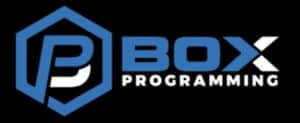Sometimes it’s easy to get caught up in programming workouts that look cool on paper. This isn’t always a bad idea, either as it keeps things fresh and exciting, but having an understanding of where pieces to your puzzle fit are important for a number of reasons.
Being able to articulate the “why” behind your programming may be just as important as the training itself.
Knowing your “why” will help lay the groundwork for your programming– and being able to explain the intent behind each of your training pieces and knowing how these pieces fit into your plan will help give your athletes direction and allow them to make better choices in terms of scaling.
As a result, they’ll be safer and receive the desired stimulus for each training session.
Why your “why” is crucial when it comes to effective program design
1. Proper Planning: If you’re simply putting your programming together last minute, are you really putting your best foot forward? Are you creating a program with both short-term and long-term goals in mind? Any well-designed plan takes time to put together and revise.
Once you have a template that suits your needs the actual putting together ideas will be much easier and more free-flowing, but one cannot come before the other. Having a plan will allow you to mindful of proper doses of volume, intensity, and movement patterns.
2. Credibility: The number of athletes that may want to know the actual science behind your training may be few and far in between, but any coach should be able to explain those aspects if asked.
Any coach can throw a workout up on their website, but it takes a different level of knowledge to actually know why you’re doing what you’re doing within the constructs of your plan.
An important aspect of briefing a group class is giving direction; if you know the intent of your strength modalities and energy systems work you’ll be able to give your athletes better direction as well as establish your authority as a subject matter expert separating you from other gyms in the area.
3. Intent: To ensure that your athletes are getting the proper stimulus from each session. This goes hand in hand with #1 so without a plan in place this will be tough to do.
Each session, the objective should be clear. You’ll be surprised how much people enjoy knowing all the details of their workouts- how things should “feel,” pacing, etc.
Imagine if you let your athletes take 15:00 to perform a workout like “Fran”. An entirely different stimulus than if you only gave them only 8:00 to perform this workout. This also rings true for strength pieces.
Performing 5 sets of 5 may be different than performing a 5RM. Your athletes need to know the desired outcome and how to tackle their training.
4. Value: Building value in what you offer the community is paramount. As previously stated, anyone can post a workout, but this does nothing to build the value in the service you offer.
Do yourself and your clients a favor and make sure you understand the principles in which your programming is built on. Your athletes will know exactly what they are getting and will be able to feel confident that you have their best interest in mind.
They’ll also see the value of your service compared to your counterparts that maybe writing their programming the night before or simply taking it off the internet.
5. Continuing Education: Knowing your why will also serve as continuing education for you and your coaches. There may be different aspects of your knowledge you’re not as comfortable with and by including more details regarding your training session you will better inform your coaches or inspire them to do their own research to further their learning.
Your coaches should be able to expound upon your programming to your clients just as you could and not just read off a script. This will, in turn, allow them to develop their own voice and confidence.
6. Safety: When you have a thorough plan in place your programming will be more balanced. You’re more likely to think about movement patterns and energy systems overlaps (or be able to see limitations more clearly).
This will allow you to ensure your clients aren’t running into any issues by training multiple days in a row or incurring other setbacks that may take them out of the game.
Also, your clients’ success will be more consistent and measurable if they are staying away from overtraining.
7. Efficiency: The time you put into your plan will more than likely translate to having your clients time in your facility be more efficient from start to finish of their class.
This simply cannot happen from random programming and throwing together workouts that look cool on paper. Also, your classes will likely be run much better by your coaches in terms of time management knowing how your pieces segway into each other.
8. Discover Biases: Having your logic and plan in place you may help you identify biases or limitations in your programming. Programming is something that is constantly evolving; if we are recycling the same material every year then we are failing to evolve and grow.
Likewise, if you tend to gravitate toward the same variations over and over your clients will likely adapt and hit the wall with their progress. Having your plan on paper will allow you to thoroughly manage how often you program movement patterns as well as your loading patterns.
9. Trial and Error: Over time your “why” may change and that’s okay! Part of the process is finding a system that works best for your athletes. As time passes, you may change your programming and come across some valuable information that improves your programming while doing so.
Back in 2013, I added an additional 24 hours between my heavier lower body lifting days. This allowed for built-in recovery during the week between more intensive lower body training session with compound movements (Monday and Friday and Friday and Monday).
This made more a difference than I ever would’ve imagined. It may be something that simple for you that makes a world of difference which brings me to my final point.
10. Details: Once your plan is in place you’ll be able to comb through your material with a fine-tooth comb and maybe even refine other details that would have been otherwise overlooked. At the end of the day, we are all humans.
We make mistakes. Combing through your material you may find several things you overlooked and see minor things that could be improved. The small details add up.
Knowing the “why” behind your programming may be the detail you need to keep your athletes healthy and progressing while keeping your coaches engaged in their own education.
Without question, your clients will be more confident in their training and your coaching and far less likely to sustain an injury while training under your watch.
Similarly, your coaches will be more confident in their ability to coach and lead their classes if they’ve done their own homework regarding your programming methodology.

